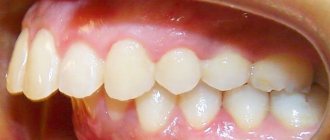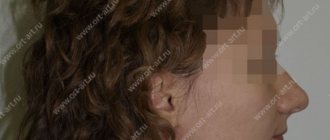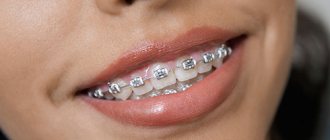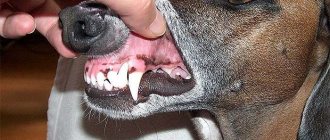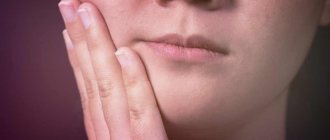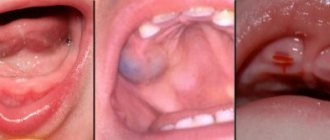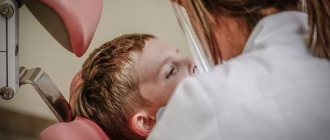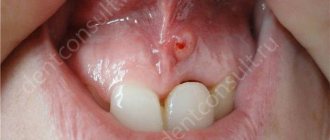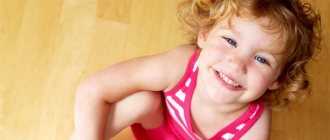A pacifier can be a real salvation for new parents. Despite numerous debates about the need for such an accessory, which have not subsided for many years in medical and parenting forums, a pacifier is simply irreplaceable for many babies: it helps calm a capricious baby, fully satisfies the sucking reflex, improves peristalsis and promotes the passage of gas. In addition, the variety of modern models allows you to choose a pacifier that will not only not harm the formation of the bite, but will also help the proper development of the dentition and facial muscles.
Baby supply stores are replete with offerings of pacifiers for all occasions. There are special models for premature and low-birth-weight babies, pacifiers for bottle-fed and breastfed babies, orthodontic, anatomical and dozens of other options that can satisfy any baby’s needs. Among such diversity, it is not difficult for young parents to get confused. Which pacifier should I choose for a newborn? Which type, shape and brand is best for your baby? How not to harm the baby’s delicate body by choosing the most suitable pacifier material? Let's look at popular models to understand the range of pacifiers.
What is an orthodontic pacifier?
The main feature of this nipple is its shape - part of it is beveled and flattened, which corresponds to a more natural position in the child’s mouth. Why did they do this? According to these parameters, it corresponds to the anatomical shape of the mother's breast when feeding the baby. This is how you can achieve the most correct grip with your mouth, as well as the desired formation of your bite.
What is an orthodontic pacifier used for? Like any other pacifier, it is given to the child to calm him down, stop crying, and whims. But due to its shape, it also additionally stimulates the development of the jaw apparatus, strengthens joints and has a positive effect on the position of future teeth.
Passive dental appliances
The peculiarity of this group of orthodontic devices is that the therapeutic effect is achieved through training the muscles of the maxillofacial area in combination with forced extension of the jaws (or tongue) to the desired position.
The device consists of:
- Plate base;
- Springs in the middle part;
- Support-retaining elements - clasps;
- Metal arch on the front teeth.
The mechanism of action of such a plate:
- Expansion of the upper jaw in the frontal region;
- Stimulation of growth of the apical base of the upper jaw.
Age of use: temporary and replacement dentition.
A plate for the upper jaw with pushers-springs is also often used to set the desired position of individual teeth (for example, if the incisors of the upper jaw are behind the incisors of the lower jaw).
Mechanism of action:
- The plate allows you to tilt one or another tooth towards the oral cavity;
- You can rotate the tooth around its axis to the desired angle;
- The device also allows you to move the front teeth towards the oral cavity.
A deep abnormal bite, as a rule, is combined with pathologies in the lateral parts of the jaws (Class II and III occlusion according to Engle, corresponding to distal and mesial bites). To correct these pathologies, double-jaw plate devices are used.
For example, a Klammt activator of the second or third type for the treatment of distal and mesial occlusion:
- A shield in the area of the lateral teeth to stretch and relax the soft tissues of the cheeks;
- Occlusal linings on the chewing surfaces of molars to separate the dentition;
- Palatal clasp - a metal wire adjacent to the palate in the middle (to expand the upper jaw);
- Springs that retract under the upper front teeth (the force of the springs pushes the teeth forward);
- Arch for the front teeth.
The mechanism of action of the Klammt activator is due to the implementation of the following effects when wearing the device:
- Advancement of the lower jaw;
- The inclination of the lower incisors towards the lip;
- Shortening of the anterior part of the jaws;
- Lengthening the lateral parts of the jaws.
Age indications: temporary, replaceable and permanent bite (during the period of active jaw growth). A contraindication to the use of this orthodontic appliance is the absence of fangs.
This design is popular among orthodontists both in Russia and abroad - the reason for this popularity is the child’s rapid adaptation to it. The device consists of two removable plates, which are adjusted to each other in the area of the side pads - this is where the name of the device comes from (paired plastic blocks are connected to each other during use).
DETAILS: Braces can also be installed on adults
Active dental appliances, widely used for bite correction, are plates that contain an active screw to expand the jaws, and if necessary, the doctor can also add to the design any elements inherent in passive appliances.
The screw is activated by the parents or the child independently (with a special key that is inserted into the holes in the screw drum).
How to make a choice?
When entering a store that sells baby products, it’s easy for new parents to get confused. After all, the offer of even just pacifiers represents a huge number of models, colors, sizes, materials, etc. Let’s try to determine what you need to pay attention to when choosing a baby pacifier for the first time:
- The material from which its main part is made is the one that the baby will directly suck on. Recently, manufacturers have settled on two options - latex and silicone. The first is more natural, but has a slight aftertaste that some children do not like. The second one has hypoallergenic characteristics, is colorless and odorless, elastic and lasts longer.
- The shape of the nipple can also be different - round, beveled, flat, etc. We point out that the orthodontic one is the most acceptable, since it completely follows the shape of the breast and best matches the natural position of the child’s tongue and jaws.
- The size of the pacifier is important - you need to pay attention to the age of the baby for whom it is intended, indicated on the label. So, they are usually divided for children up to six months, up to one year and up to two or three years. It is obvious that even if you buy a pacifier of the correct shape, but a larger or smaller size, you will harm the development of the bite.
- Color - here the choice remains only with the parents, since for the baby it will not matter yet. The only thing doctors pay attention to is the wish that it be light, neutral tones. After all, a bright object in the child’s visibility range can distract his attention.
- The price of such products fluctuates approximately in the same ranges and differs only depending on the brand, brand, and popularity of the manufacturer.
There are also nipples for bottles of different shapes, including orthodontic ones. If your baby will be fed formula, then it makes sense to choose it according to the specified parameters. This is the only way to be sure that many dental and speech therapy problems will be avoided in the future.
Separately, it is worth pointing out the duration of use of pacifiers made of different materials. Silicone ones are resistant to temperature changes and last much longer. Although over time they may begin to crack and lose elasticity. Latex ones are more fragile, a child can easily bite through them. In addition, such products often begin to stick together and need to be replaced with new ones.
Tips for forming the correct bite in a child
Parents rarely think about when a child’s bite begins to form, yet this process occurs from birth and consists of several stages:
- From birth to six months. At this time, the jaws are preparing for the appearance of the first teeth and the correct placement of them during this period is very important.
- From six months to three years - the appearance of a temporary bite.
- From three to six years - preparation of the jaw for the appearance of permanent teeth, the temporary bite is fully formed.
- From six to twelve years, the baby teeth are replaced by permanent teeth, and during this period a mixed bite is formed.
- From twelve to fifteen years, a permanent bite is formed.
As you can see, it is very important to monitor the formation of a correct bite in a child from birth, and not from the appearance of permanent teeth, as many parents believe. Already at the stage of eruption of the first milk teeth, it is necessary to ensure that there is no constant pressure on the jaw, be it a finger in the mouth, a toy or a pacifier. After all, it is for this reason that a child develops an incorrect bite, including the pacifier.
What malocclusion pathologies may appear as a result of pacifier pressure on the jaw:
DETAILS: Correcting overbite in dogs with a mouth guard
- Deep (the lower jaw extends far beyond the upper).
- Open (teeth from both jaws do not close together, forming a gap).
- Mesial (the lower jaw protrudes noticeably forward).
- Distal bite (with the jaws closed, the upper jaw moves forward in relation to the lower jaw).
- Crossed (weak development of one of the sides of the upper or lower jaw is observed).
The optimal period for correcting the bite is adolescence, when the replacement of baby teeth with permanent ones has already occurred.
To avoid difficulties in weaning your baby off the pacifier, it is necessary to study the issue of child development more carefully. Until the age of 7 months, the child needs to satisfy the sucking reflex, which gradually changes to chewing by the age of one year. After all, from the age of 6 months, pediatricians recommend gradually introducing the first complementary foods.
In order not to create unnecessary stress for the child, the weaning process should be started slowly, gradually reducing the time the pacifier is used. At this stage, there should be no difficulties, because the child develops very quickly both mentally and physiologically, he is interested in everything new, and the research instinct is actively manifested.
At the age of one and a half years, if the habit of sucking a pacifier still persists, parents must show the child to a pediatric dentist so that he can determine whether the pacifier can ruin the bite and how strong its effect on the jaw apparatus is.
If a child cannot do without a pacifier after two years, the help of a child psychologist may be needed, because, most likely, the baby is uncomfortable in the environment and the pacifier appears to him as a kind of reassurance and protection.
It is necessary to urgently wean your baby off the pacifier in special cases:
- If he has problems with hearing and speech.
- In cases of mental retardation (under the supervision of a specialist).
- Upon reaching the age of three years.
In any case, there is no universal way to wean off the pacifier; each baby needs a different approach. However, general recommendations boil down to the fact that during this difficult period for the child, you need to provide him with maximum comfort and protection, as well as distract him in every possible way and allow him to develop naturally.
Thanks to the wide range of tastes and aromas of ASEPTA products, the child will be happy to brush his teeth on his own. The natural composition of the pastes, as well as beneficial plant extracts and calcium enrichment, makes the series an indispensable oral care product for children. ASEPTA cares about the health of children's teeth!
Every parent wants their baby to have healthy and straight teeth. That is why it is very important to take care of the formation of the correct bite from the first days of the baby’s life.
- Try to use properly shaped nipples - the hole in the nipple should be small so that the milk drips rather than trickles out. Otherwise, food enters the baby’s mouth too quickly and practically does not require sucking movements from him. As a result, the baby actively swallows, which contributes to maintaining the posterior position of the lower jaw, and not at all to active growth. Make sure that the hole is positioned so that the stream is directed towards the baby's hard palate, simulating breastfeeding.
- The bottle should not put pressure on the child’s jaw, preventing it from moving forward. The bottle should be positioned perpendicular to the baby's face.
- When bottle-feeding, hold the baby in the same position as when breastfeeding, changing sides right and left.
- Feeding duration should be 15-20 minutes.
During the first year of life, the sucking reflex is a physiological need for the baby. By 8-9 months of age, the sucking reflex is gradually replaced by a chewing reflex, which is facilitated by the timely introduction of complementary foods. It is during this period that it will be psychologically and physiologically easier for the child to give up the pacifier.
It is permissible to continue using the pacifier for up to 6 hours of total time during the day. 6 hours is the threshold value that can be considered safe for the formation of a correct bite.
For children who find it difficult to part with their favorite pacifier, there is a special soft silicone vestibular plate “Stoppie”, invented by Dr. Hinz. Such a plate will not only help the baby painlessly say goodbye to his beloved pacifier friend, but will also correct existing malocclusions.
- The formation of a child’s bite is also influenced by factors such as sleeping position. It is necessary to ensure that during sleep there is no excessive pressure from the pillow on the baby’s jaw, and that the head is not tilted too much forward or backward. During sleep, the child should not place a pen under his cheek.
- The baby's mouth should be closed while sleeping. If the baby opens his mouth while sleeping, it means his nose stops breathing. Often the adenoids block nasal breathing, and even after the problems with the adenoids are resolved, he may continue to breathe through the mouth. Children with this problem need to be treated by an ENT doctor, perform a set of breathing exercises, as well as gymnastics using special trainers.
- It is important to ensure that your baby sleeps in different positions. To do this, you need to periodically turn it from side to side, onto its back.
- From birth, the baby should sleep on a fairly hard and level surface. It is optimal if the first pillow is orthopedic, designed taking into account the age of the children. Pay attention to your baby's habit of sucking his thumb or other objects, for example, a corner of a blanket, a jacket collar, or the ear of a favorite teddy bear. Remember that 6 hours of exposure to a foreign object per day is enough for malocclusion to occur.
- Pay close attention to your child's posture. Few people know that crooked posture can also cause problems with bite. The baby should not rest his cheek or chin while sitting on a handle, table or other objects.
DETAILS: Surgery to correct distal bite
All of these factors negatively affect the formation of a correct bite in a baby. You should minimize the possibility of their influence on the health of your baby.
The difference between an orthodontic nipple and a regular one is its anatomical shape, beveled at an angle with a slightly flattened tip. It forces the lower jaw to actively move back and forth, promoting the correct and natural development of the maxillofacial apparatus, prevents the baby from swallowing air when sucking, evenly distributes pressure on the palate, and forms a correct bite. The mother needs to carefully monitor the position of the pacifier in the baby's mouth - the beveled side should be directed strictly downward.
The pacifier consists of a protective disc - a mouthpiece, with a nipple attached on one side and a ring on the other side. In terms of size, orthodontic pacifiers from the majority of manufacturers (Avent, Nuk) are designed for the age of children:
- from birth to 3 months;
- from 3 to 6 months;
- over 6 months.
Each child needs to choose a pacifier that is optimal in size and length so that it does not jump out of the mouth and does not make breathing difficult. As the baby ages, the size of the nipple also changes.
The mouthpiece can be massive or small, oval or round in shape. It should fit snugly enough to the area around the lips, not interfere with breathing, and have ventilation holes for air circulation and prevent saliva accumulation.
The pacifier ring serves for ease of use and makes it possible to attach it to clothing.
Even an orthodontic pacifier can cause harm if certain features are not taken into account. Let's study them in more detail.
- Firstly, these devices are intended only for mothers who have problems with natural feeding: little or no milk, flat or very small nipples. However, even in such cases it is not necessary to immediately accustom the baby to substitutes. Changing the shape of the breast is possible; for this you need to buy a special corrector or pads. The corrector gently stretches the nipple and makes it more comfortable for feeding.
- If the mother does not have problems with lactation, she breastfeeds the child at least 10 times a day, then there is no need for special devices until the child starts eating porridge.
- You should not constantly give a bottle of any flow to your baby just to calm him down. This can lead to loss of appetite and malnutrition.
- When your baby is teething, you should remove the pacifier from his mouth as soon as he falls asleep.
- Any feeding device must be thoroughly washed at least once a day. Breast corrector and bottle attachments must be cleaned after each use.
- After a year, the child needs to be weaned from empty sucking on pacifiers and bottles. Otherwise, bad habits may develop, which often lead to bite defects.
DETAILS: Plates for teeth - How to place plates to straighten teeth - dental portal MyDenti
Popular models
In the store you can find the following famous brands:
- Avent (Avent) - silicone products are odorless and tasteless. Specially shaped wings reduce pressure on the child’s gums and are considered a very convenient option. Manufacturers have thought through ensuring daily hygiene by creating a separate cap for each product. They can also be washed in the dishwasher or sterilized in special devices.
- Bibi (Bibi) - there are varieties of latex and silicone models. Clever holes on the wings of the base are designed for better air circulation, which prevents irritation of the skin around the mouth. The quality of the products is such that they do not deteriorate when repeatedly boiled. What parents will especially like is the opportunity to choose interesting and original colors with inscriptions or drawings.
- NUK (Nuk) - the nipple is made from a particularly soft material, and its shape has a good recess, which provides space for the tongue. Sizes are designed for children from toddlers to three years old. Made of latex in such color options as gold, red and blue.
- Dr.Brown (Doctor Brown) - silicone models without taste or smell. The manufacturer offers to purchase a set of two products at once. The comfortable shape and pleasant material help the child quickly get used to the device and happily accept it. The sizes are larger for newborn babies.
- Tommee tippee (Tommy tippee) - silicone models with an emphasis on breathable wings at the base. It is thanks to them that it is easy for the child to hold the pacifier in his mouth and at the same time the skin does not become irritated from increased salivation. Parents will also like the original design and colors.
- Canpol (Kenpol) - the manufacturer offers the widest range of nipples made of latex and silicone. At the same time, various shapes, colors, sizes will help you choose the most suitable one for your baby.
Therapeutic removable devices for correcting malocclusion
There are a large number of varieties of removable orthodontic appliances used to treat malocclusions. The choice of a particular treatment method depends on the specific clinical situation, the experience and skill of the doctor, and the patient's willingness to comply with the doctor's instructions.
During the period of mixed dentition, treatment of occlusion anomalies is aimed primarily at modifying jaw growth and creating favorable conditions for the eruption of permanent teeth. Expansion of a jaw that is lagging in growth can be achieved using both removable and fixed devices fixed in the mouth.
Next, we will consider the most widely used designs.
Extraoral orthodontic devices for bite correction are a special type of medical devices that have the following components in their design:
- Special arc metal elements that are fixed into holes on orthodontic rings, previously fixed to the molars of the upper jaw;
- And also pressing elastic power modules.
Extraoral appliances can be used either independently to correct malocclusions, or as a preparatory stage for treatment with braces, or during the active phase of treatment with braces.
The power elements and the parts that fasten them are attached to the patient’s face (neck, parieto-occipital region, forehead). The facial arch parts can be removed - the doctor teaches this to the child and parents.
The design of a chin sling includes a pressure bandage made of dense fabric (or plastic), a head cap and connecting straps.
Indications for using such a device:
- Increased muscle tone that excessively pushes the lower jaw forward (that is, if there is a tendency to form a mesial bite);
- And also when the growth rate of the lower jaw prevails over the growth rate of the upper jaw;
Age of use of chin sling: mixed and permanent dentition.
The design of the face mask includes:
- Support pads (on the chin and forehead);
- Fixing screws;
- Metal carcass.
Mechanism of action:
- Extension of the upper jaw forward;
- Change in the vertical relationship of the anterior teeth.
Indications for the use of an orthodontic face mask:
- Underdevelopment or posterior position of the upper jaw;
- Mesial bite caused by the anterior position of the chin.
A facial mask is used to correct occlusion during the period of temporary, temporary and emerging permanent dentition (which corresponds to the child’s age of 4-6 and 9-12 years).
It consists of an intraoral dental part, fixed into tubes adapted for this purpose, and an extraoral facial part, at the ends of which there are hooks for securing an elastic cord with a cervical support.
The facebow is produced in three standard sizes – small, medium and large.
Thrust direction options:
- Occipital - a cap similar to a chin sling is fixed on the top of the head;
- Cervical (with a neck support) – fixed to the back of the neck;
- Combined traction.
DETAILS: Medical mouth guards for teeth straightening
Mechanism of action:
- Thanks to the face bow, the growth of the upper jaw is delayed;
- The upper molars are placed according to Angle class I (that is, in the optimal physiological position);
- The front teeth are tilted towards the oral cavity.
Clinical indications for use are the second class of occlusion according to Angle (that is, distal occlusion, when the teeth of the upper jaw are strongly pushed forward).
The age of use of the device is a removable and developing permanent bite.
The wearing regimen of extraoral orthodontic appliances should ideally be 14-16 hours a day. The duration of treatment ranges from several months to a year or more.
This group of devices includes various versions of well-known brace systems, due to which the bite is gradually aligned, as well as frame structures for jaw expansion, which are fixed in teeth rings on the molars.
Here it is worth mentioning separately the principles of self-help and diet when wearing braces.
So, there are several problems that almost all patients with braces face to one degree or another:
- The arc begins to stab, emerging from the locks on the last teeth. This occurs because the archwire straightens back to its original position over time as the teeth move into position. If this happens, you need to call the doctor and explain what exactly happened - the doctor will invite you to trim the ends of the arch. If you can’t quickly get to your doctor, you can temporarily close the tip of the arch with special orthodontic wax. This wax is sold in pharmacies, as well as in online stores;
- Arc left the last castle. In this case, you can try to very carefully thread the arc yourself using tweezers. Either use wax and seal this part of the arch so as not to injure the cheek before visiting the orthodontist;
- The bracket came off. If possible, the bracket must be preserved, the orthodontist must be notified and, after agreeing on a time, come for bonding.
While wearing braces, it is necessary to follow special rules for eating: cut meat, apples and all hard foods into small pieces and carefully chew them with your side teeth. Biting on food can cause the braces to come off. Chewing gum, seeds, chocolate with nougat are completely excluded, as they can peel off the locks or cause the arc to come out of the lock.
The design includes:
- Rings on the first molars and premolars (6th and 4th teeth);
- Barbells;
- Screw for opening the palatal suture (it is activated by the child himself, or by parents using a key).
The mechanism of action of the device is realized through:
- Opening of the palatal suture;
- Expansion of the upper dentition;
- Shortening of the anterior part of the upper dentition.
The age of use of an orthodontic frame for expanding the palatal suture is a removable and permanent bite.
Indications for use: Engle class I, II, III, as well as congenital malformations of the maxillofacial area with a narrowing of the dentition by more than 5 mm.
Very effective for slow palatal expansion of the maxilla. The frame can be adjusted to provide greater expansion in the anterior arch. The activation is performed by a doctor.
It is used to correct the shape of the dental arch and prevent unwanted movement of molars.
All frame products are fixed with dental cement to the supporting teeth.
How to properly give an orthodontic pacifier?
In order to preserve all the thoughtful nuances of the chosen model and provide the child with maximum comfort when using it, you need to adhere to certain recommendations:
- Give the nipple with the beveled edge down, which will allow the tongue to move more. Make sure your baby doesn't turn it over in his mouth.
- Be sure to process, wash and sterilize the product every day.
- Before giving a pacifier to a child, you need to carefully inspect it for cracks or other defects.
- It is advisable to replace silicone models with new ones every month, despite the fact that it has not deteriorated externally. But latex ones can be thrown away once every two months.
- Doctors emphasize that even a child should be weaned off an orthodontic pacifier at the age of one.
- Try to use this “helper” only when necessary, without abusing it. When the child falls asleep, you need to carefully remove the pacifier, because this is not a night toy.
Video: how to choose a pacifier?
When to buy and how to use pacifiers?
At first, the baby is usually breastfed, and frequent breastfeeding completely satisfies his sucking reflex. Usually during this period there is no need for a pacifier, and many parents buy the first model at 10-14 weeks of the baby’s life. When it is not possible to feed naturally, a pacifier can be selected and offered to the baby in the first week after birth.
It is necessary to offer a pacifier in rare cases - when the baby is crying a lot, is frightened by something, or is hungry (food is about to be prepared). During times of whims, it is advisable to switch the baby’s attention to something else, but it is forbidden to take away the pacifier when it has already fallen into the hands.
The side of the nipple with the notch is for the lower jaw. The model should be positioned in the mouth so that the beveled part is directed straight down, located on the baby’s tongue. It is important to accustom the baby to this position of the nipple, constantly monitoring the process in the first month of use. Soon the child will get used to it, feel comfortable and stop turning the pacifier over.
